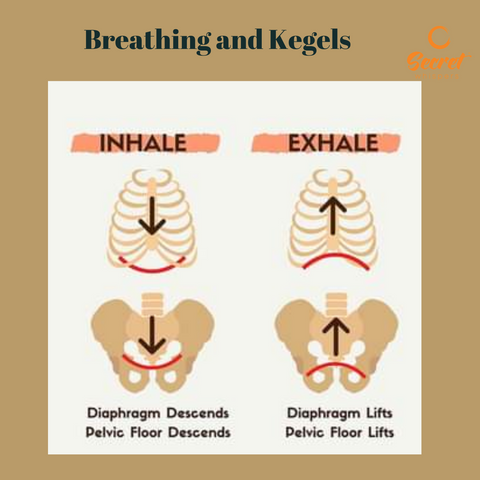The Relationship Between Singing and your Pelvic Floor
[Written by Website Blog Content Writer - Michelle Silcox]
Whether you do it in the shower, or the car, or while cooking dinner, it's good for you. If you’ve been following our blog, you’ll know that it doesn’t matter where you do it… but for a change, I’m not talking about Kegels (although it’s always a good time to do your Kegel exercises too!), I’m talking about singing!
I like to sing all the time, much to the disdain of my daughters. I even sing my conversations with them sometimes, which really annoys them. Think “would you like more pasta” in a musical theatre style, and you’ll have an idea what I mean! I’m not a good singer especially, but I love it, and it makes me feel happy.
The physiological benefits of singing have long been explored and making music, no matter how good or bad, exercises the brain, improves breathing, posture and muscle tension and reduces cortisol and boosts the Immunoglobin A antibody, thus helping to sustain a healthy immune system.
But how does all this relate to my pelvic floor, you are probably asking. Well, when you sing, you are not only using your vocal chords, but also your lungs, diaphragm, abdominal muscles and you pelvic floor. All the body is connected, as one whole machine, but even though that is the case, it is often easy to forget that something as simple as singing engages the muscular system all the way down to the pelvic floor and perineum.
How Singing is Connected to Your Pelvic Floor

One of the most important bodily functions to enable us to sing (remember we are not talking opera here, even if you sound like a strangled cat, you are still singing!) is breathing.
We all breathe without even thinking about it, although as we discussed in our previous blog, we are not always breathing properly. In that blog, we looked at how breathing can help with pelvic floor dysfunction.
Correct breathing will make your singing sound better, because if there is not enough air passing through your vocal folds, you will not be able to make a sound.
Singing requires a higher rate of breath energy than speaking, as well as a lengthened breath cycle. In addition, singing requires the use of our diaphragm, which in turn impacts upon your pelvic floor.
When you contract the diaphragm as you inhale, the pressure from the diaphragm pushes down onto the pelvic floor, which then has to stretch to accommodate the downwards pressure.

How the Pelvic Floor Helps you Sing Better
According to Backstage, the most important part of your body involved in good singing technique is... you guessed it…your pelvic floor! The reason for this is the support the pelvic floor muscles give to the diaphragm and abdomen to create the perfect amount of sub glottal pressure for resonance. A slight bearing down on the pelvic floor helps keep the abdomen muscles consistently engaged.
How Singing Can Help Heal the Pelvic Floor
Our Kegel Weights and pelvic floor workout programme are a brilliant line of defence against pelvic floor dysfunction, and the new 30 Day Pelvic Floor Challenge, starting later this year, will set you up for recovery, but singing is a great way to support these methods, and will make you feel good at the same time!
Imagine floating around the house like Snow White, singing your socks off, and toning your pelvic floor all at the same time! What’s not to love?
A study carried out by Bedekar in 2012 1 into the way singing could help heal the pelvic floor showed participants how to correctly engage their pelvic floor doing long and short Kegels, whilst doing simple singing practice and found that an improvement in their pelvic floor strength was apparent after three weeks.
"The number of fast contractions increased by 42% and 50%; and the time for the slow hold increased by 25% and 53%.
Six out of eight participants in the asymptomatic group found this to be a good and interesting way to do exercise"
When your pelvic floor is letting you down, it can seem as if even singing, like any forced exhalation, can put pressure on your pelvic floor, however singing is a wonderful method of rehabilitating the muscles down there.
Singing training can be a great buddy for your Kegel workout, to rehabilitate your abdominal function to cope with all forced exhalation such as coughing, laughing and sneezing.
Try engaging your pelvic floor muscles to do a long Kegel and belt out a few notes at the same time. Activating your pelvic floor muscles while singing, will help make them stronger, and lift your spirits at the same time!
Never miss another blog again. Sign up now to my weekly Newsletter. You will get a 10% discount code to use too. Just click below ⬇️⬇️⬇️
Any questions? Just email us at support@secretwhispers.co.uk and we will get straight back to you
Sources:
1 https://pogp.csp.org.uk/system/files/bedekar.pdf












